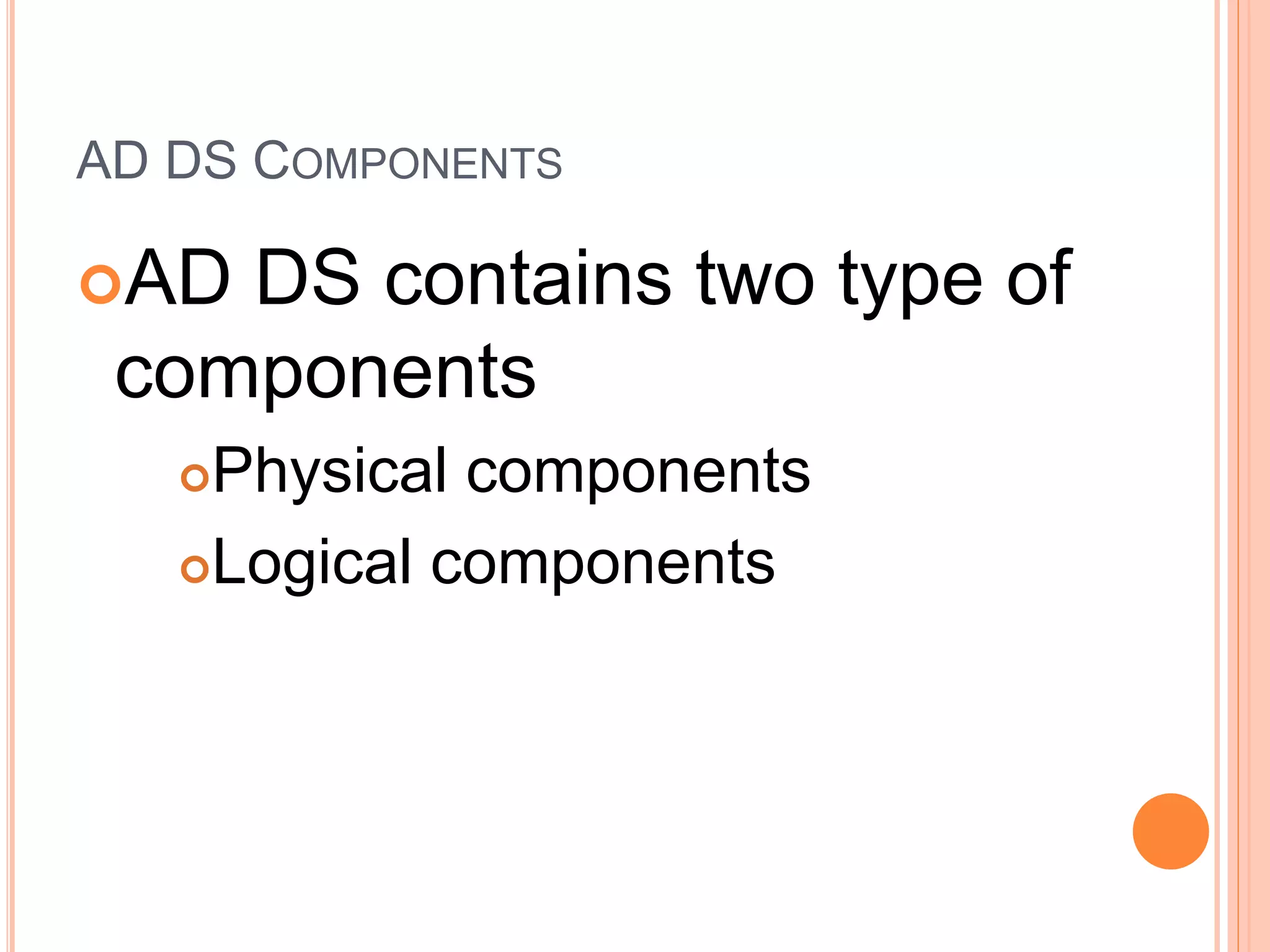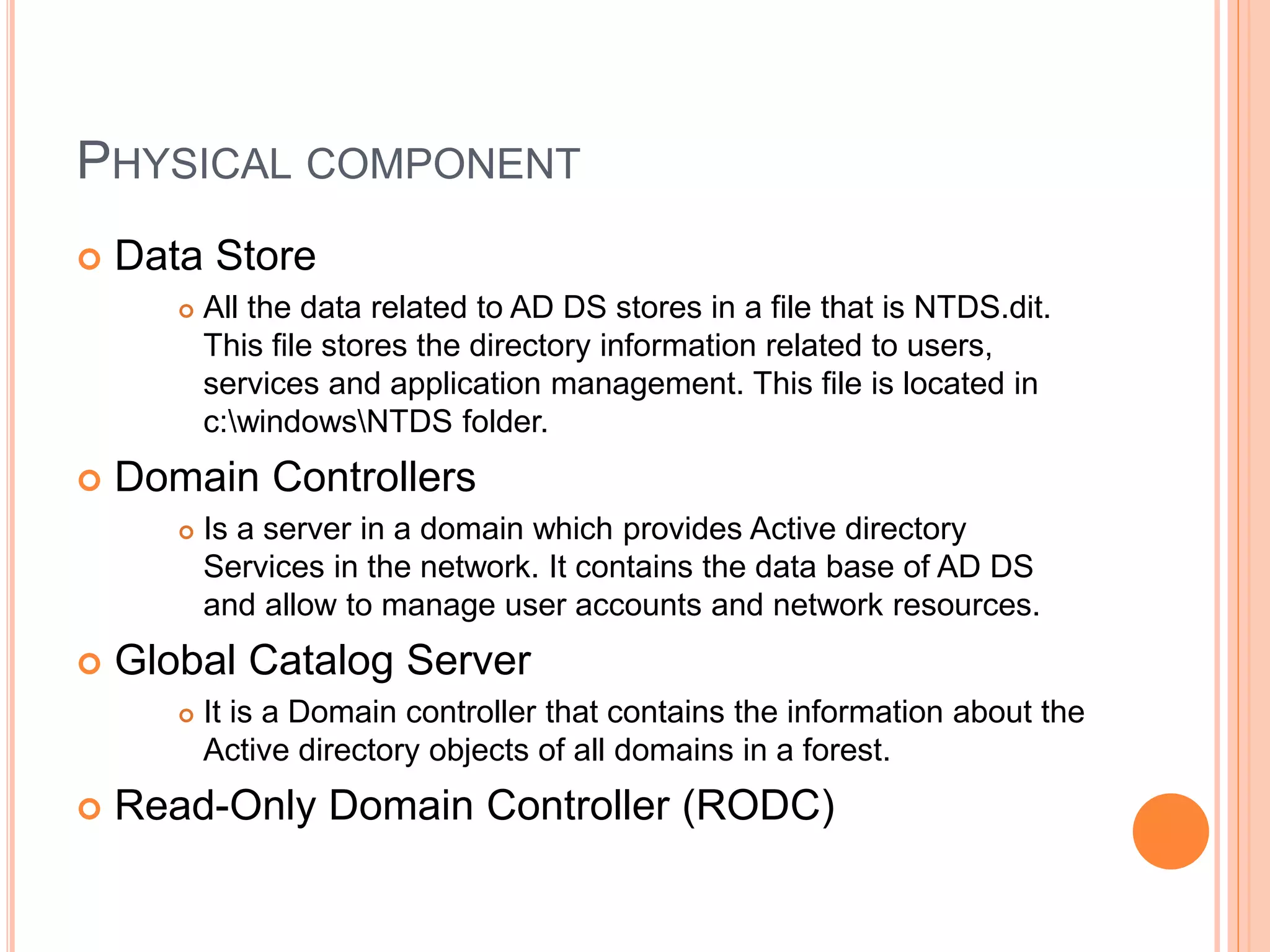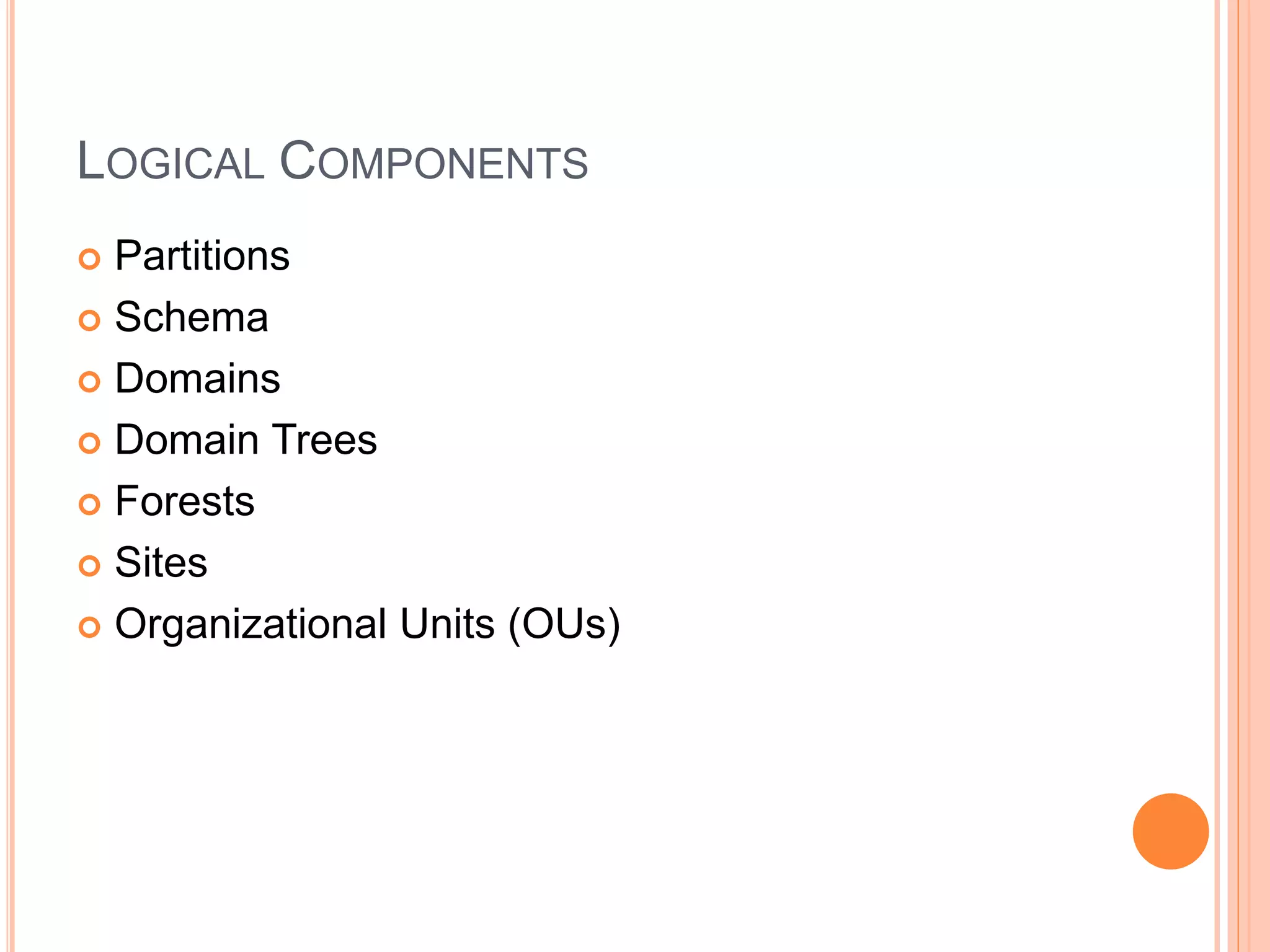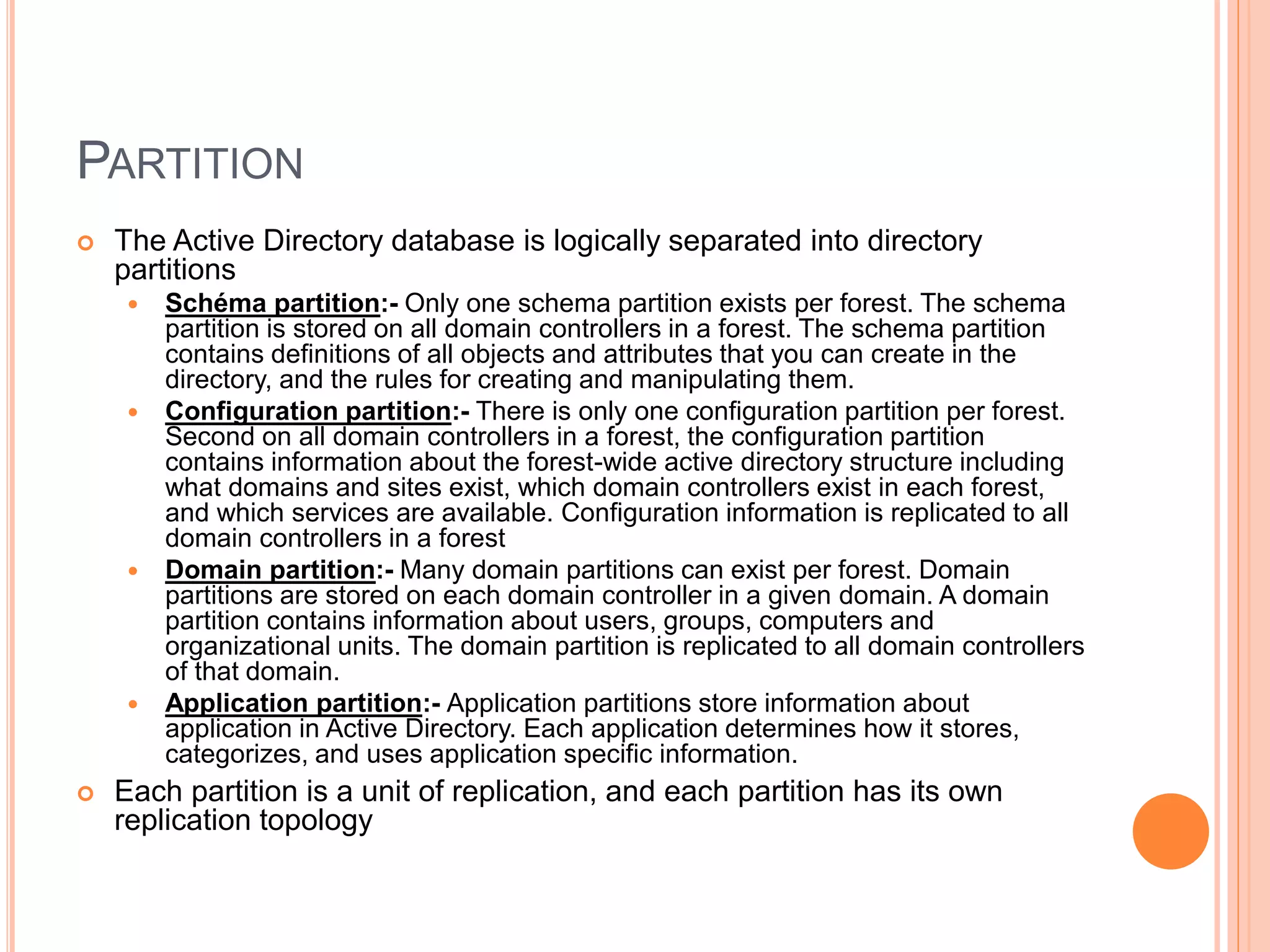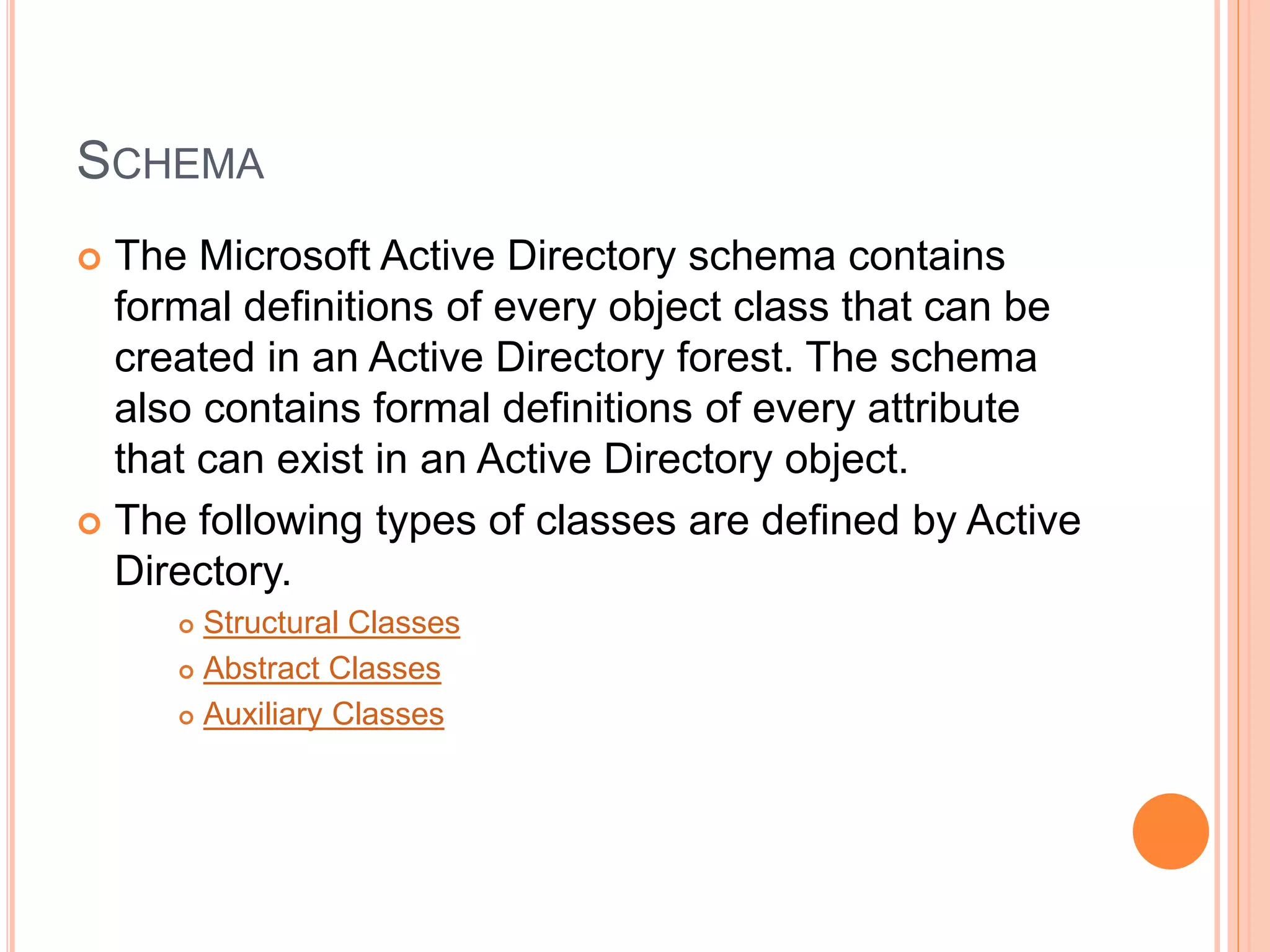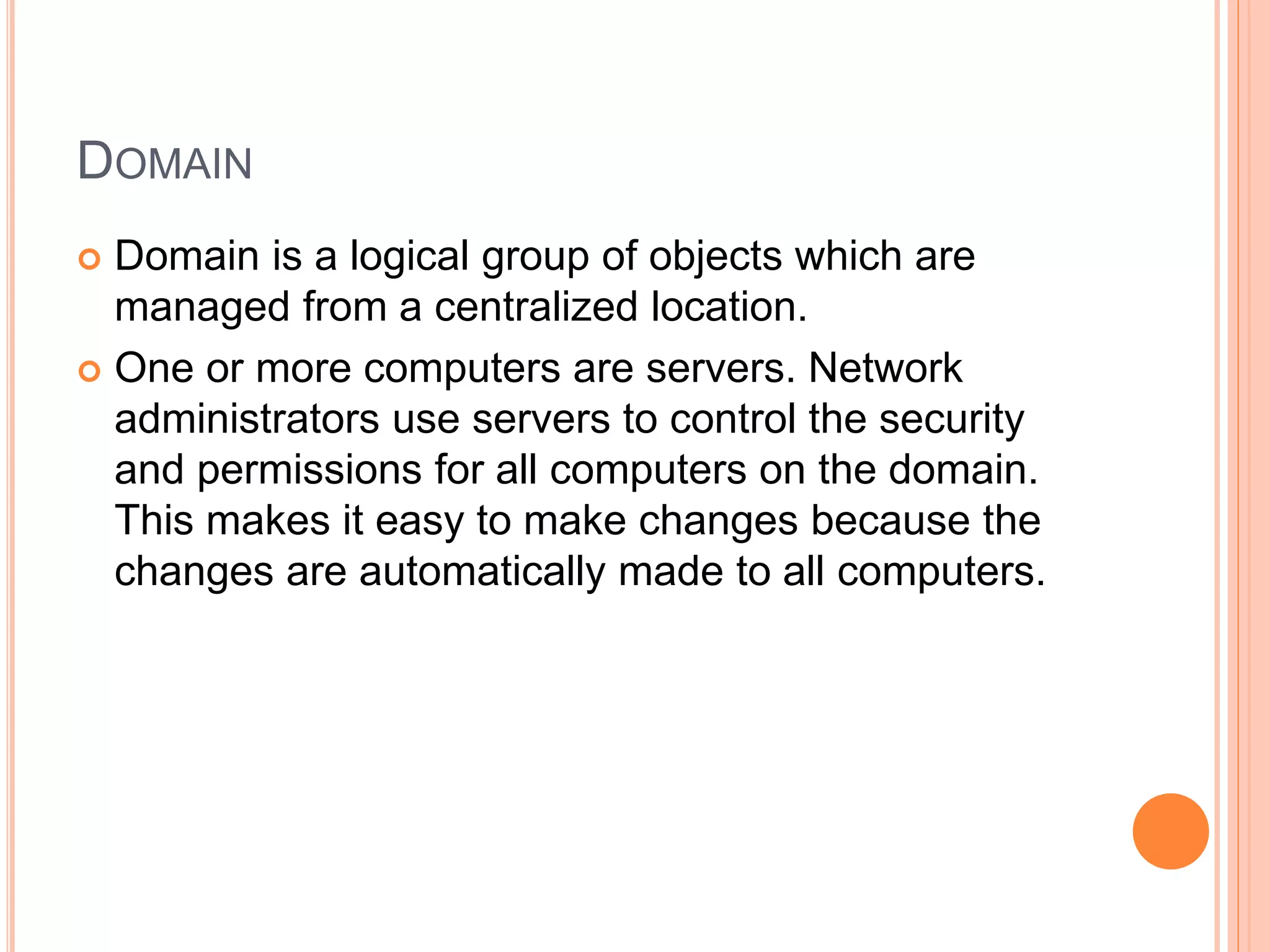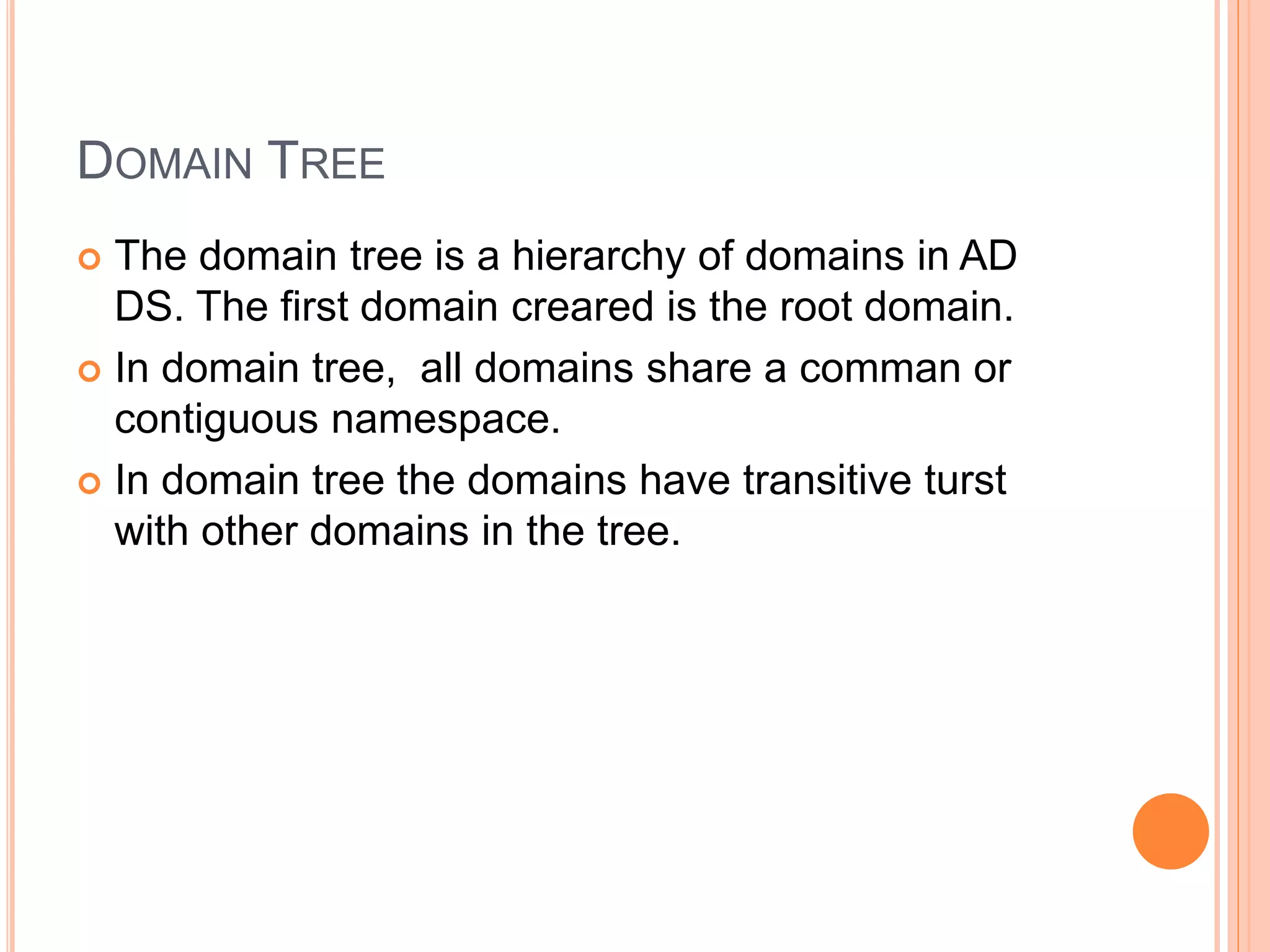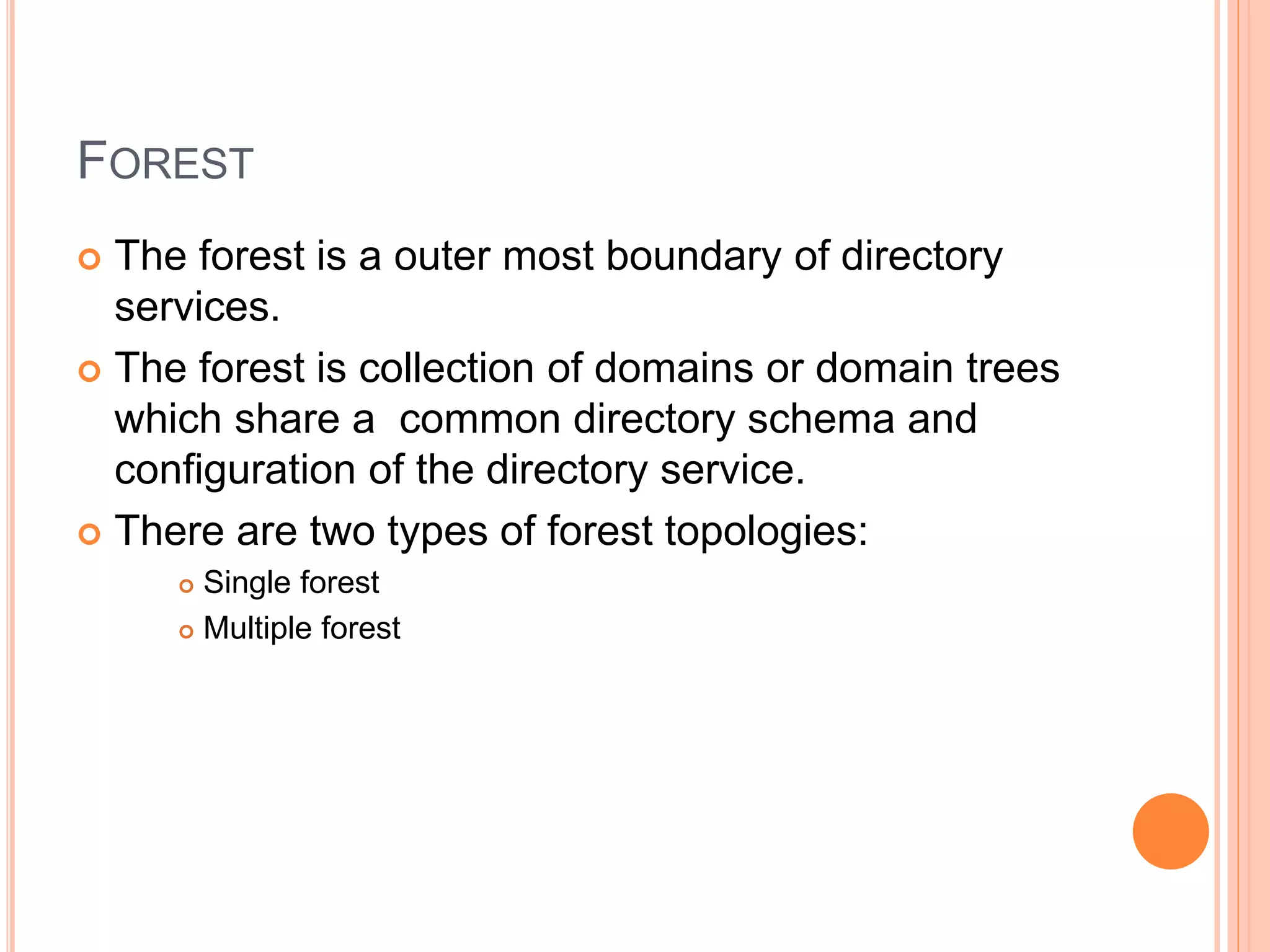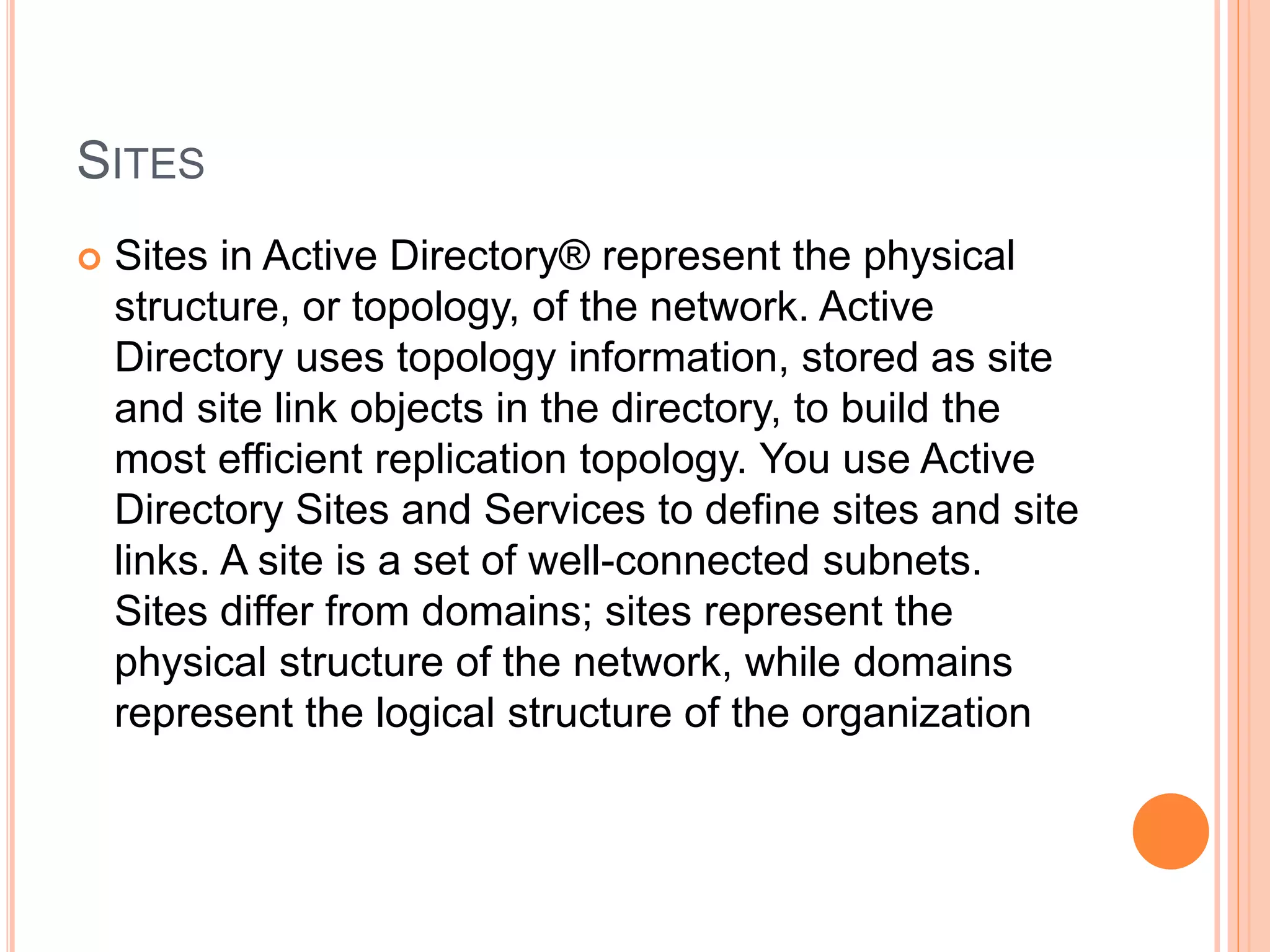Active Directory Domain Services (AD DS) has both physical and logical components. Physically, data is stored in the NTDS.dit file on domain controllers which replicate this data. Logically, the directory is partitioned with separate schema, configuration, domain and application partitions that each replicate independently. The schema defines object classes and attributes. Domains and domain trees group objects under a common namespace with transitive trust. Multiple domain trees make up a forest with a shared schema and configuration. Sites represent the physical network topology to optimize replication.
